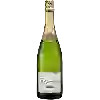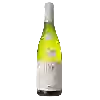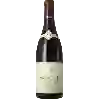
Winery Bailly LapierreVive-la-Joie Brut
This wine is a blend of 2 varietals which are the Chardonnay and the Pinot noir.
In the mouth this sparkling wine is a powerful with a nice vivacity and a fine and pleasant bubble.
This wine generally goes well with poultry, appetizers and snacks or lean fish.
Taste structure of the Vive-la-Joie Brut from the Winery Bailly Lapierre
Light | Bold | |
Soft | Acidic | |
Gentle | Fizzy |
In the mouth the Vive-la-Joie Brut of Winery Bailly Lapierre in the region of Burgundy is a powerful with a nice vivacity and a fine and pleasant bubble.
Wine flavors and olphactive analysis
On the nose the Vive-la-Joie Brut of Winery Bailly Lapierre in the region of Burgundy often reveals types of flavors of cream, grapefruit or citrus and sometimes also flavors of apples, peach or butter.
Food and wine pairings with Vive-la-Joie Brut
Pairings that work perfectly with Vive-la-Joie Brut
Original food and wine pairings with Vive-la-Joie Brut
The Vive-la-Joie Brut of Winery Bailly Lapierre matches generally quite well with dishes of shellfish, poultry or appetizers and snacks such as recipes of chinese fondue, chicken with rice for cookeo robot or macaroons foie gras / figs.
Details and technical informations about Winery Bailly Lapierre's Vive-la-Joie Brut.
Discover the grape variety: Chardonnay
The white Chardonnay is a grape variety that originated in France (Burgundy). It produces a variety of grape specially used for wine making. It is rare to find this grape to eat on our tables. This variety of grape is characterized by small bunches, and small grapes. White Chardonnay can be found in many vineyards: South West, Burgundy, Jura, Languedoc & Roussillon, Cognac, Bordeaux, Beaujolais, Savoie & Bugey, Loire Valley, Champagne, Rhone Valley, Armagnac, Lorraine, Alsace, Provence & Corsica.
Last vintages of this wine
The best vintages of Vive-la-Joie Brut from Winery Bailly Lapierre are 2008, 2006, 2013, 2010 and 2009.
Informations about the Winery Bailly Lapierre
The Winery Bailly Lapierre is one of of the world's greatest estates. It offers 27 wines for sale in the of Crémant de Bourgogne to come and discover on site or to buy online.
The wine region of Crémant de Bourgogne
Recognized in 1975, the appellation crémant-de-bourgogne replaced the Sparkling wines whose quality was not very homogeneous. Its geographical area, very vast, covers more than 300 communes, of Châtillonnais, with the borders of Champagne auboise, with Beaujolais included. The AOC imposes conditions of harvest and elaboration as strict as those of the Champagne region and copied on this one, the difference residing in the duration of Maturation on lees, which is of nine months minimum, against twelve for the champagne. The Grape varieties used also bring Crémant-de-Bourgogne closer to its illustrious Champagne model, for although all the varieties of the region can be used, Pinot Noir and Chardonnay are favoured.
The wine region of Burgundy
Bourgogne is the catch-all regional appellation title of the Burgundy wine region in eastern France ("Bourgogne" is the French name for Burgundy). Burgundy has a Complex and comprehensive appellation system; counting Premier Cru and Grand Cru titles, the region has over 700 appellation titles for its wines. Thus, Burgundy wines often come from one Vineyard (or several separate vineyards) without an appellation title specific to the region, Village or even vineyard. A standard Burgundy wine may be made from grapes grown in one or more of Burgundy's 300 communes.
The word of the wine: Yeast
Micro-organisms at the base of all fermentative processes. A wide variety of yeasts live and thrive naturally in the vineyard, provided that treatments do not destroy them. Unfortunately, their replacement by laboratory-selected yeasts is often the order of the day and contributes to the standardization of the wine. Yeasts are indeed involved in the development of certain aromas.














